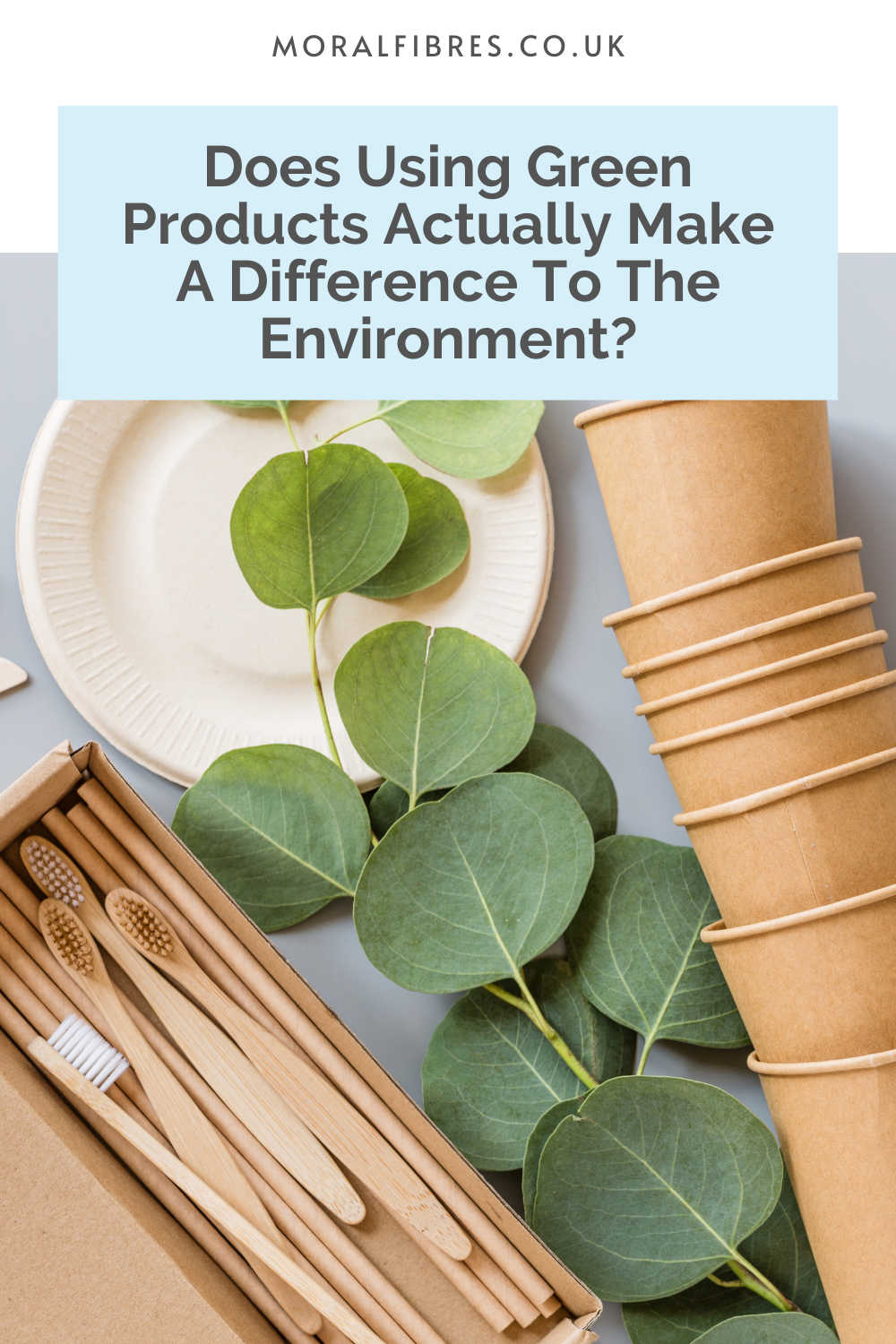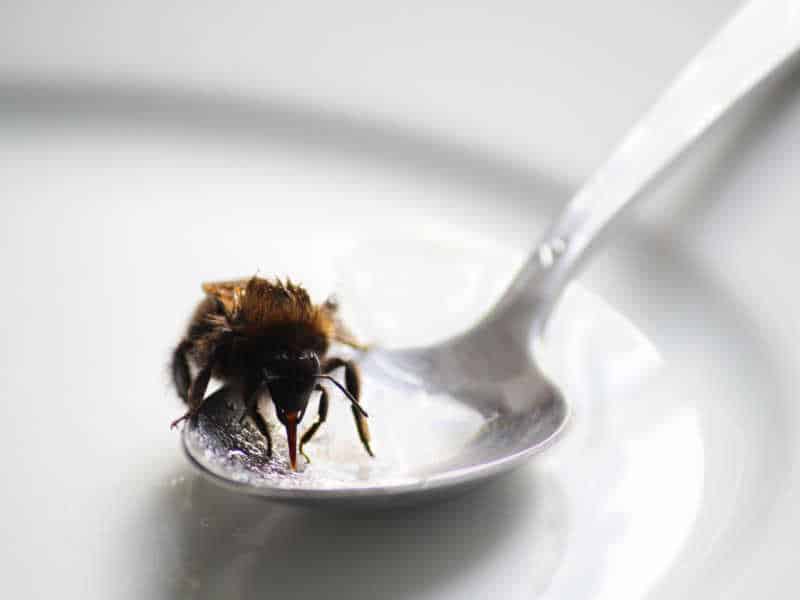Green Products – Do They Make A Difference To The Environment?
To support the running costs of Moral Fibres, this post contains affiliate links. This means Moral Fibres may earn a small commission, at no extra cost to readers, on items purchased through these links.
Does using green products actually make a difference? Sudina Manandhar from Earthandhuman explains why making the switch to using green products is vital for both the health of people and the planet and the pitfalls to watch out for in the process.
Going green involves incorporating a lifestyle that benefits not only the people who live on the planet but also the environment itself. With coastal flooding, global rising temperatures, and severe weather changes, people are becoming more conscious of their lifestyle decisions.
And for good reason. Humans have absorbed more resources in the last 50 years than at any other point in human history.
With the rise of cheap materials such as plastics and petrochemicals and increasing knowledge of the impacts of these materials on the environment, the interest in green products has never been greater.
With more and more people looking to green their lifestyle, there are increasing discussions on how this impacts our biosphere. Many of us care about making environmentally friendly choices and want to use products that are both self-sustaining and cause the least damage possible. But how do we make sure the green products we do buy actually make a difference?
What Is A Green Product?

First, we must understand what a green product actually is.
Green products are typically distinguished as being made with non-toxic ingredients in an environmentally friendly manner, and which can be disposed of responsibly at the end of their life.
Many green products are also certified by reputable organisations. These include Energy Star for electrical items, the Forest Stewardship Council (FSC) for wood-based items, the Global Organic Textile Standard (GOTS) for textiles, as well as many other accredited labelling schemes.
Some of the characteristics of a green product are that they are:
- Cultivated without the use of harmful chemicals and under sanitary conditions.
- Recyclable, reusable, and biodegradable.
- Packaged in an eco-friendly manner.
- Utilising the fewest resources.
- Has a low carbon footprint.
- Has a low or no plastic footprint.
Why Buy Greener Products?
When items are produced in a non-environmentally friendly manner, there are a host of consequences. From toxic exposures to air pollution, water contamination, global warming, natural resource depletion, improper disposal, and ecosystem damage. These are all potential hazards to both human health and the environment.
These impacts can occur at any point in the product’s life cycle. This includes the extraction of raw materials, and during the production and labelling processes. It can also include the impacts of transportation to retail units and the selling of these items. It even extends to product use and the product’s end of life.
Buying greener products – especially those made from renewable resources – can help mitigate some of these impacts, as well as benefit both the environment and local communities.
The Green Consumption Effect
Whilst there are environmental benefits to buying eco-friendly products, researchers have interestingly found that buying green products can enhance a shopper’s wellbeing. It was found that buying a green product makes customers feel good – giving them a warm glow – and makes them feel like responsible and upstanding citizens.
This is a phenomenon known as the green consumption effect.
However, the same study found that the green consumption effect vanishes when the environmentally friendly component of the item has a low or negligible environmental benefit.
Be Aware Of Greenwashing
The trouble is that many unscrupulous brands try to take advantage of this green consumption effect. As such, numerous companies seek to distinguish themselves in a highly competitive marketplace by over-exaggerating their eco-friendly credentials to encourage customers to buy their products.
Greenwashing is the phrase used to characterise the process when a company exaggerates how environmentally-friendly its product actually is.
Falsified sustainability assertions, such as in the ethical jewellery sector, are the number one reason customers say they would avoid purchasing a product. That is, greenwashing is more offensive than having a terrible online presence or terrible reviews.
But how do you know if the so-called green products you are using are genuine or phoney? Here are a few things to do to avoid being greenwashed by a brand:
Is The Green Product Able To Back Up Its Claims
If a product alleges to be compostable, biodegradable, or sustainable, then the brand should provide more details on how or why. Preferably the brand should provide external certifications to back up these claims.
Read The Small Print
Food packaging is a prime example of how some environmentally friendly statements, such as ‘biodegradable’ and ‘compostable,’ may not be as beneficial as they appear.
Plastic wraps may be labelled as compostable. However, do read the packaging or contact the manufacturer if advice is missing. The wrapper may be home compostable, which is good. In other cases, it may require to be composted commercially. In this case, it’s considered greenwashing, as few people have access to commercial composting facilities.
Look For Accreditation Or Buyer’s Guides
Several third-party environmental credentials aim to ensure specific benchmarks are met by brands. This includes accreditations such as Fairtrade, B Corp, and Rainforest Alliance Certified.
While accreditations are not a panacea, they indicate whether businesses are making an effort to help the environment. Buyers’ guides, such as those for ethical shoppers, can also assist by doing some of the analysis for you.
False Claims Should Be Reported
If there are no details on the tag or website about how a product is green, consult the brand directly. False or deceptive environmental claims are against Advertising Standard Agency guidelines. Businesses that make misleading claims may face fines.
The Future Of Green Consumerism Looks Promising
It is tough to persuade consumers to pay more for goods. However, brands can encourage consumers toward making more environmentally friendly choices by making things convenient and incentivising green behaviours.
UK supermarket chains already charge for plastic shopping bags to encourage the reuse of bags. Many supermarkets also offer single-use plastic recycling terminals. These often include recycling incentives, such as money off your grocery shopping.
In some instances, simply providing a price reduction for reusing old bags, containers, or cartons can make a difference. As can providing a discount for cafe customers using their own cups.
As green living is not accessible to everyone, brands must consider how they can bridge the information gap and assist consumers with a behavioural change, regardless of their circumstances.
It’s also important to remember that green consumerism is more than just buying environmentally friendly products. It can also include recycling, preserving, and taking public transport instead of driving a private car, where possible.
Don’t Be Fooled
We are all accountable, not only for our individual well-being but also for the health of everyone and the planet. As the sustainability movement gains traction, many people are looking for simple ways to green their lifestyles.
However, this leaves us at risk of greenwashing by unscrupulous companies, driven by profit rather than genuine environmental concern. Distinguishing between genuinely green products and greenwashing can help ensure the products we buy do genuine good to both people and the planet.
Found this post useful? Please consider buying me a virtual coffee to help support the site’s running costs.




